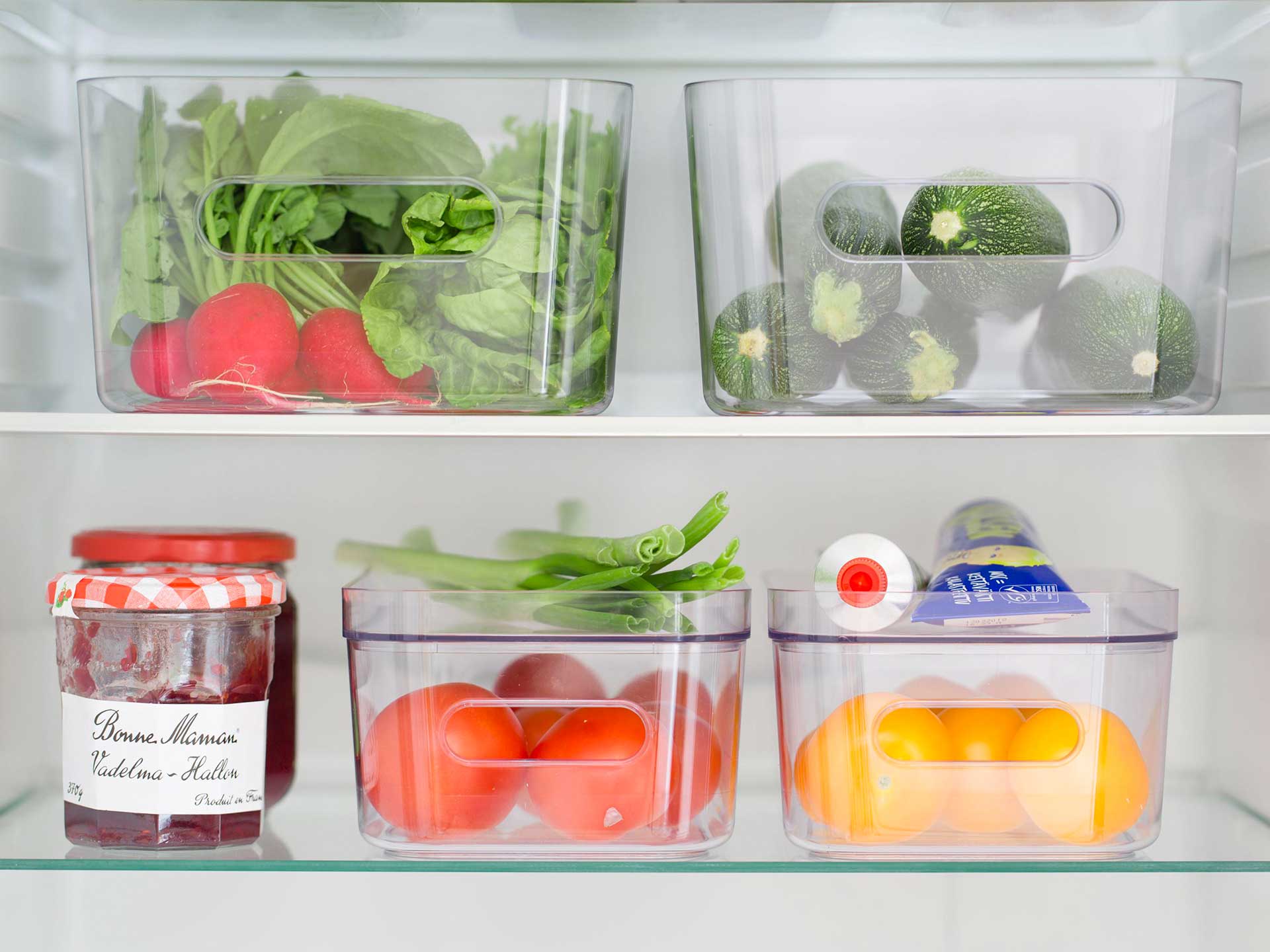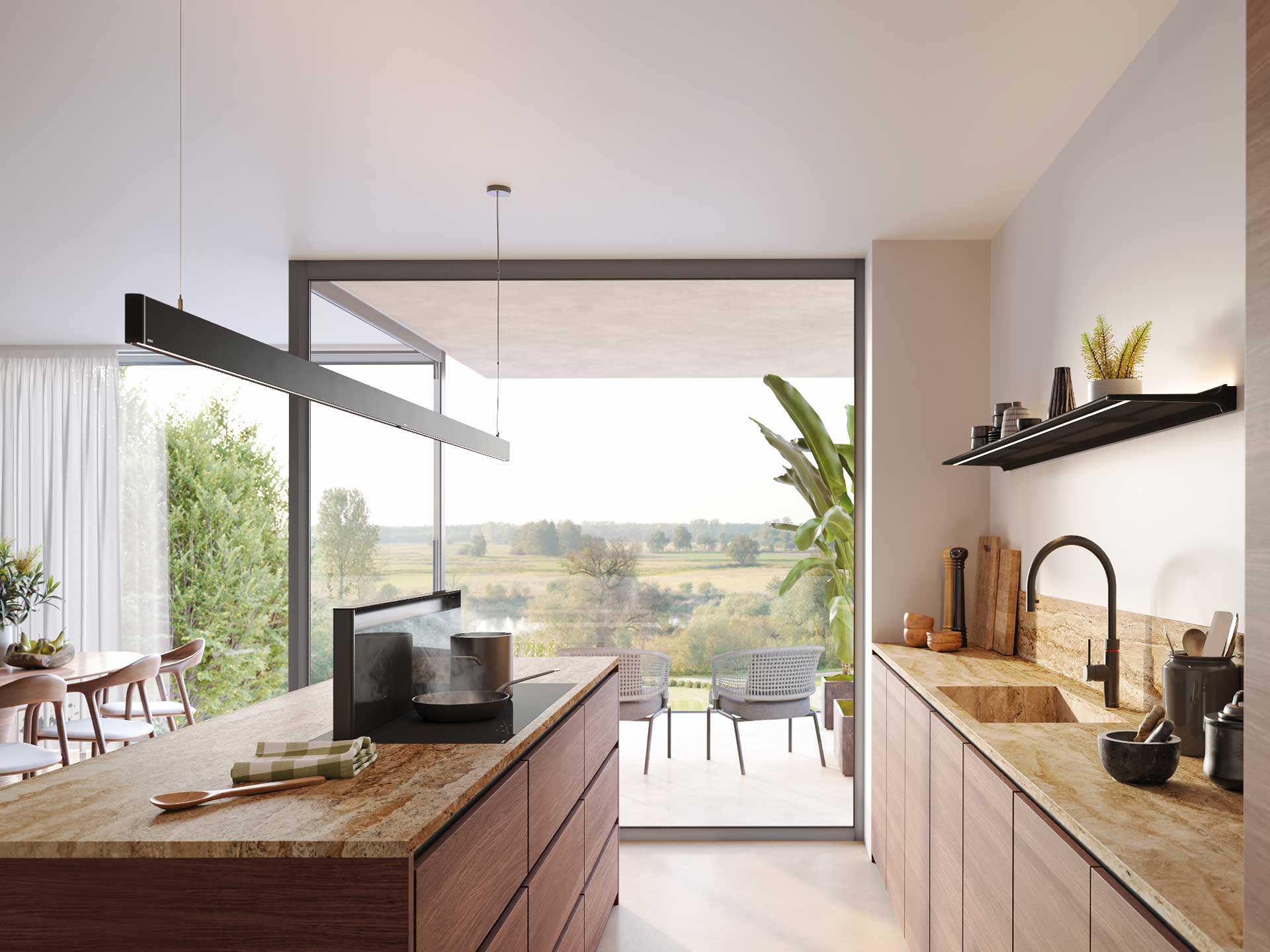
Image credit: Novy
How to create a sustainable kitchen
Creating a sustainable kitchen doesn’t need to break the bank. In fact, there are plenty of resources to design a beautiful, long-lasting kitchen at a fraction of the cost.
From saving thousands on a second-hand display, to laying a reclaimed floor, to choosing more sustainable and low-impact materials or recycled pieces. Porcelain worktops and plywood cabinetry (use B/BB grade for cabinetry) are both hard-wearing and better for the environment. Consider your carbon footprint and lowering your emissions. Even small changes like reducing your food waste and switching to LED lighting will make a difference.
For bigger changes, think about an induction hob, which is overtaking gas and electric for domestic and is by far the most energy efficient. Boiling water taps are not just on-trend, they’ll save you a lot of water, as you won’t waste anything in overfilling the kettle.
Think about the details in your kitchen, where is your hardware from? What paint are you buying? A low VOC paint will help your walls breathe. Check everything you buy is FSC-certified, meaning it’s approved by the Forest Stewardship Council UK. This actually includes many materials, not just wood, such as pulp and paper to rubber and bamboo and textiles.
Pop a hygrometer in your kitchen. So much water gets released into the air when cooking, it’s important to keep your relative humidity at an optimum level (anything between 40 – 60% is healthy) and reduce the risk of mould and bacteria forming.
Consider buying a used kitchen
Quality interiors are built to last, but plenty of kitchens are ditched, even though they have plenty of life left in them, not least those from showrooms who need to regularly change their displays to keep up with trends. Rehome (formerly known as the Used Kitchen Exchange) has come up with a great idea that champions salvaging those kitchens and selling top brand names without the hefty price tag.
Rehome says that for “every kitchen sold, its re-use saves, on average, 5,000 kgs of carbon. That’s around one year of being carbon neutral for a family of four”. Better for you and better for the environment.
Rehome has some inspirational customer stories on their website, including Claire from @interiorantidote who bought a £47, 000 kitchen for £4,000 for her 1920s home.
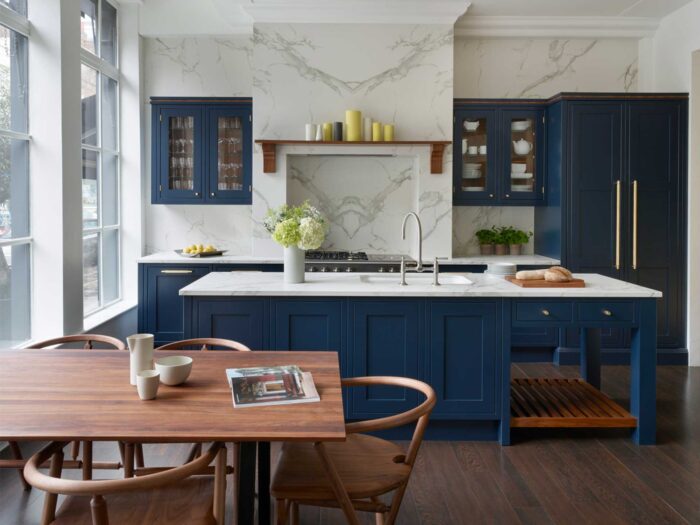
Lay a reclaimed floor
When thinking about laying your kitchen floor, consider using reclaimed tiles. Not only are they more sustainable, they’ll add more depth and texture to your home.
Family-run business Ca’Pietra, who bill themselves as “hunter-gatherers for Europe’s most meticulous tile makers”, also do a fine line in reclaimed tiles. The Antique Burgundy Terracotta tiles (pictured) are over 100 years old and have been salvaged from France. Each batch varies slightly in size (although they are roughly 15x 15cm and 2.5cm thick) and cost £240.00 per m2. The tiles are supplied in raw condition and may need a deep clean when you fit them. All of Ca’Pietra’s tiles arrive in recycled packaging.
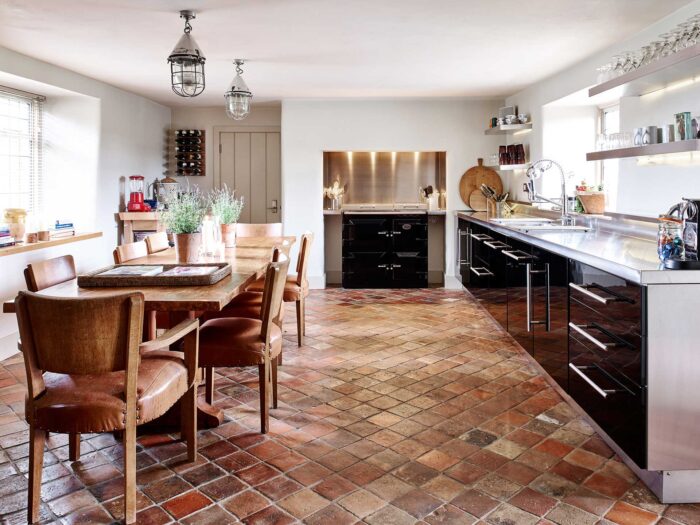
Bring in alternative worksurfaces
Marble (whose extraction is labour-, water- and energy-intensive, with a high amount of wastage) and quartz have been popular recent choices for worktops but there’s a new and more sustainable contender on the market: porcelain. Cue Laminam. Its Italian headquarters are located in Fiorano Modenese (MO) in the heart of the “ceramic valley” and the company uses its own technology to create large-sized ceramic work surfaces.
Not only do the worktops look spectacular and feel luxurious, they’re also eco-friendly. During daytime hours, the Laminam kilns are fired using only solar power, they also use low-fire flux bodies for increased energy efficiency. Laminam feeds 100% of their water consumption back into their production and recovers 95% of raw waste.
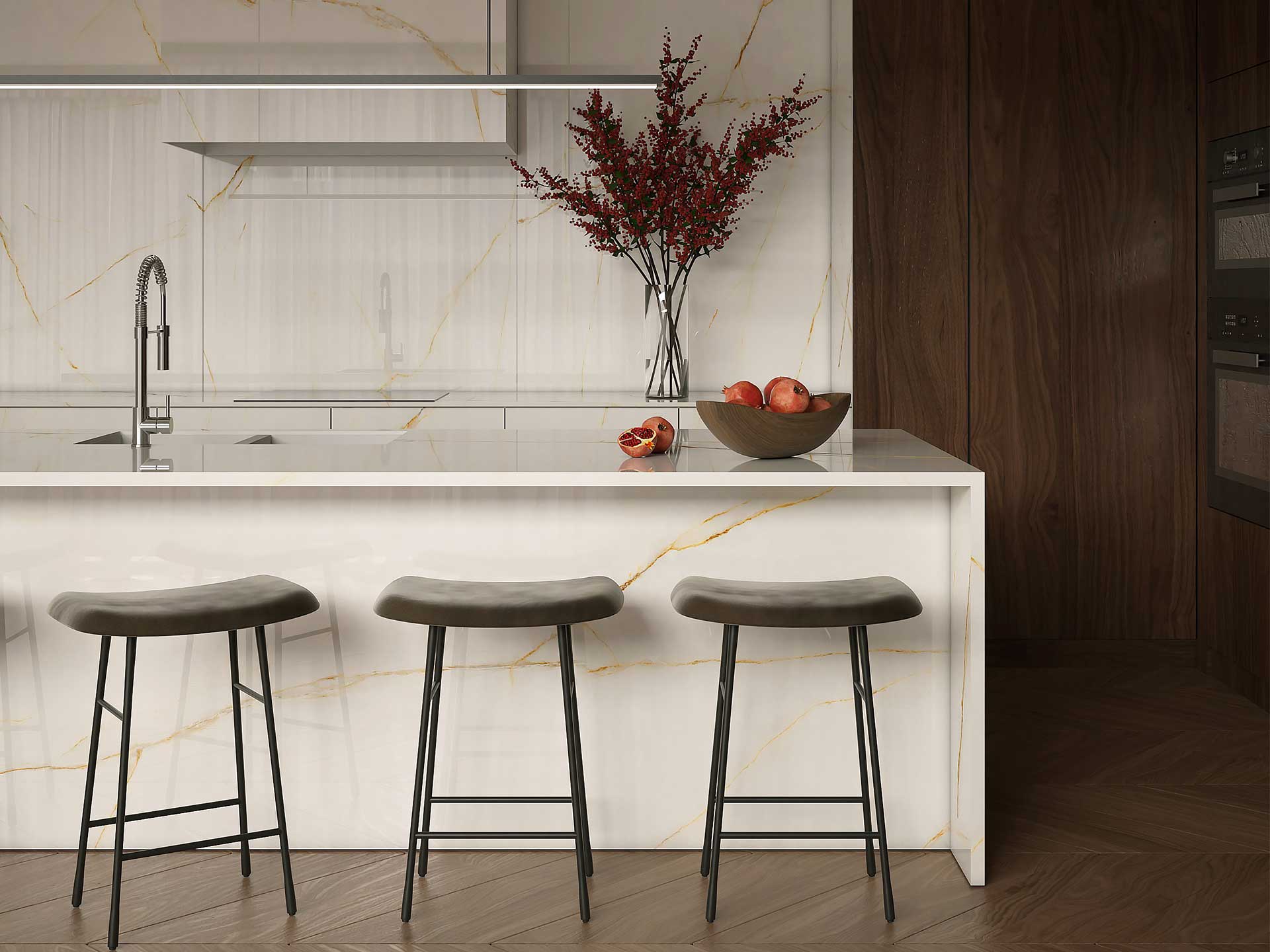
Upcycle your cabinetry
When it comes to installing a new kitchen, your first instinct is probably to rip it all out and start again, but often the cabinetry is solid and you can save a fortune by keeping it. Repainting your cabinets will give your kitchen a whole new lease of life and an option to try a completely new colour scheme.
For electric brights, YesColours has a brilliant range of colours to make your kitchen pop, from Fresh Aqua to Electric Yellow to Serene Peach and Loving Orange (pictured).
Follow these top tips for painting your kitchen cabinetry and transform your kitchen for the price of a couple of tins of paint.
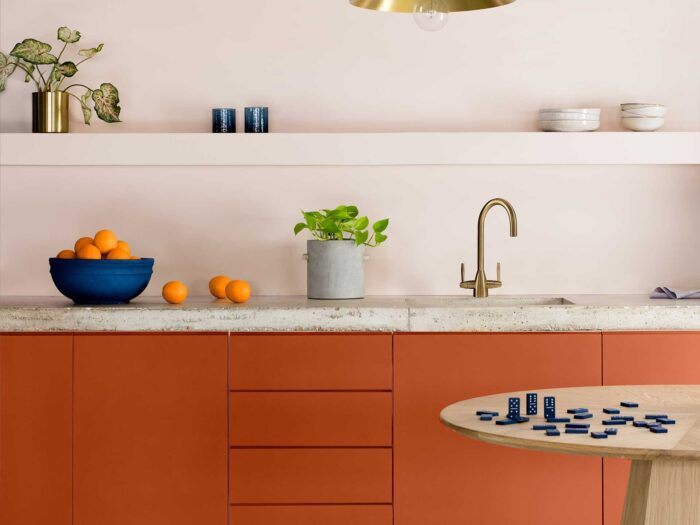
Invest in standalone pieces
Large kitchen islands can be costly and take up a large amount of materials. While they remain popular as a concept (having a welcoming communal space to hang out, eat and chat around is key) we’re seeing more alternative islands being used to create a sustainable kitchen. Think a rustic, farmhouse vibe, like the Nkuku scene (pictured) with a standalone island.
Try searching ‘antique butcher’s block’ in Facebook Marketplace for local, well-made gems. The added bonus of having a freestanding piece is the light and space it creates over having one large solid block, plus the option to roll it out the way for parties and kitchen discos, and the option to easily take it with you if you were to move house.
If you opt for a fully freestanding kitchen, which is increasing in popularity over the fully fitted kitchen, then there’s plenty of flexibility if you decide to switch up your layout.
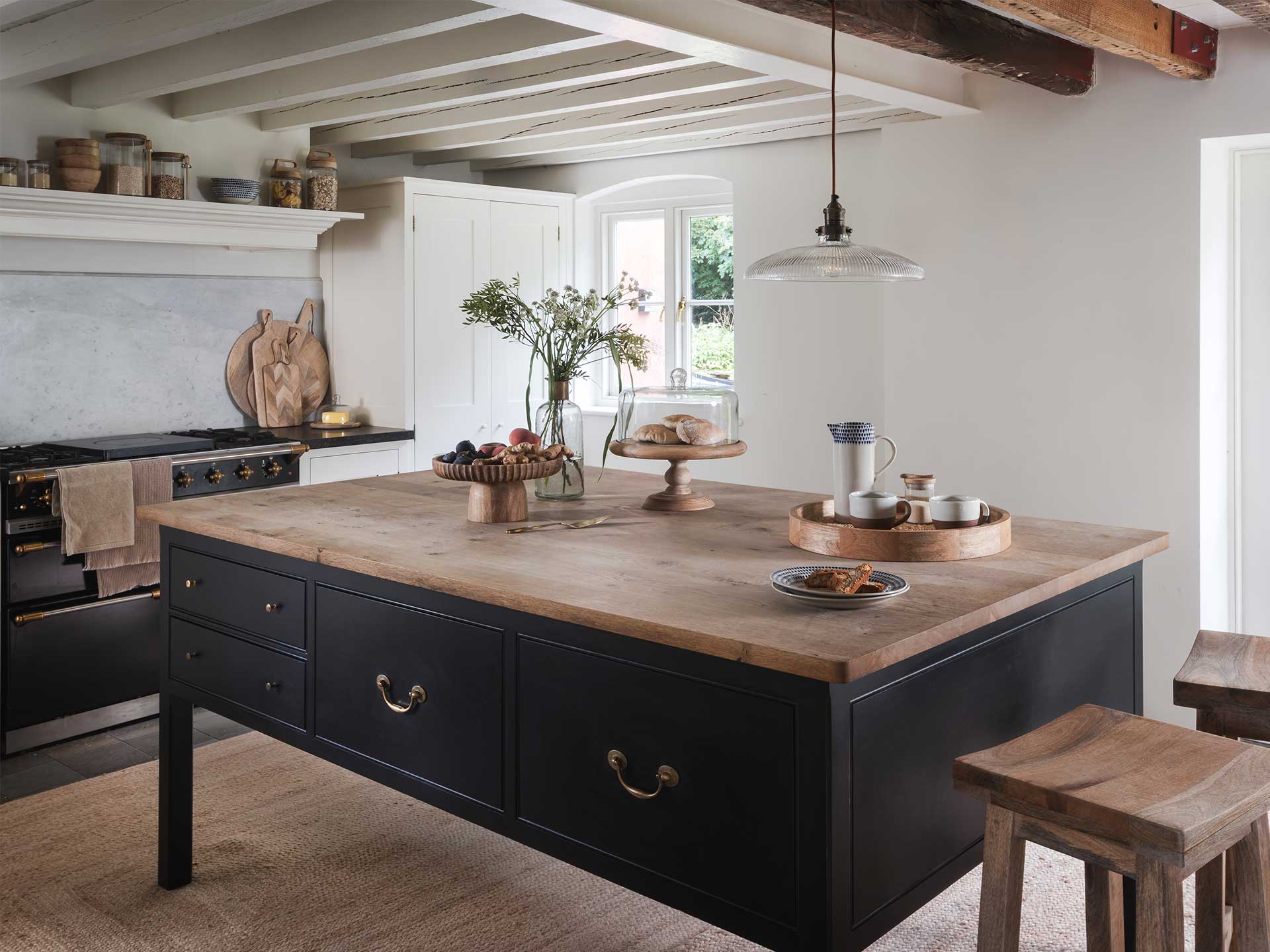
Use sustainable hardware
On a kitchen revamp, you might want to skimp on the hardware, but frankly it’s not worth it. Plank was born out of a frustration of not being able to source beautiful, eco-friendly hardware at a reasonable price so Tom and Annie, the couple behind the brand, made their own.
The range includes cabinet hardware, handles and pulls, knobs, hooks and internal doors hardware in eight different finishes that run from antique brass to black and seven styles including classic to contemporary. The details in your kitchen will make all the difference.
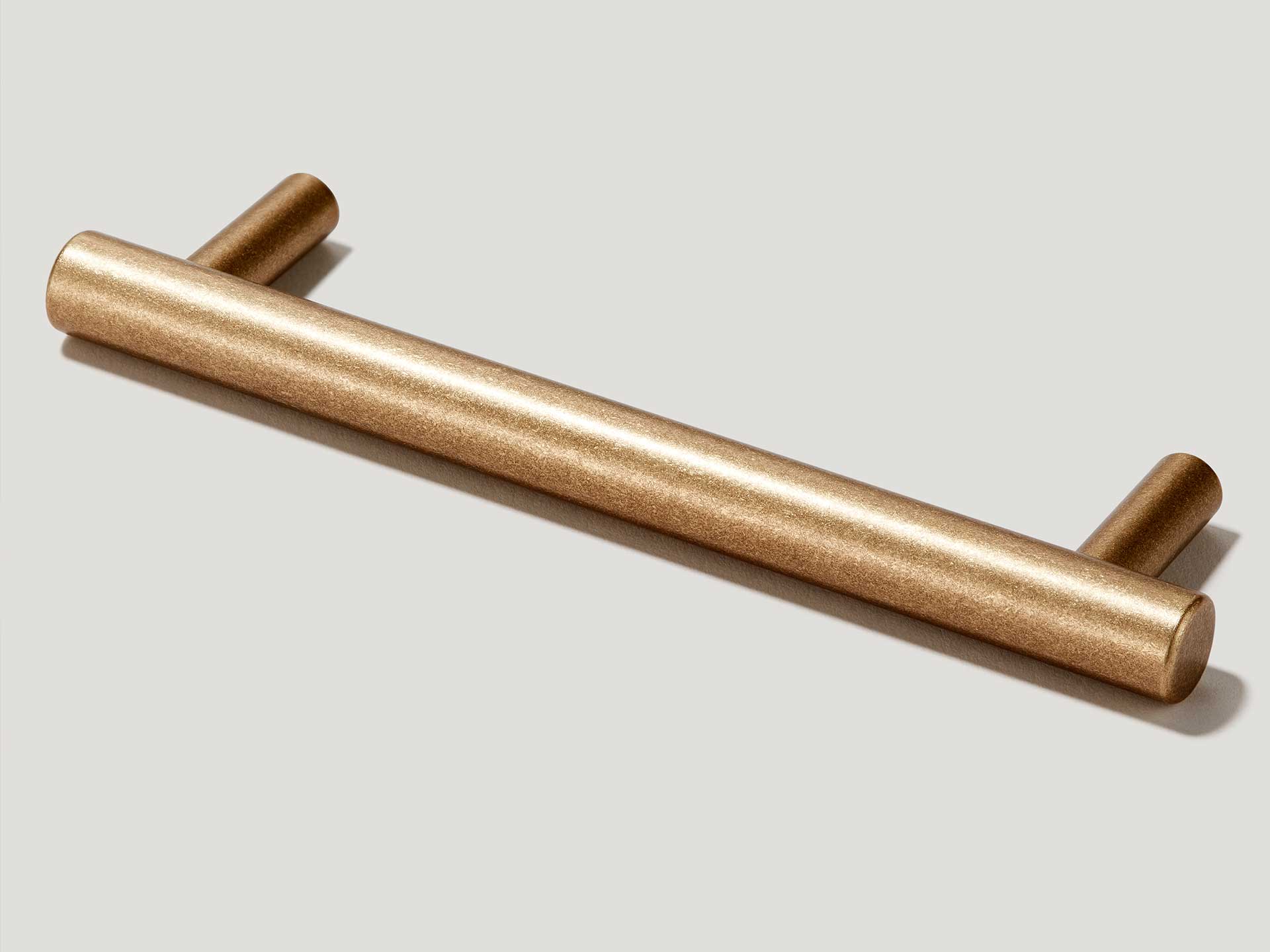
Don’t forget the paintwork
Think about your walls when creating a sustainable kitchen. There are plenty of eco-friendly paint brands to look out for from Lick to Little Greene and Earthborn. Another climate-positive paint brand to try is COAT. They source and produce their paints locally, use closed loop tin and paint recycling, are B Corp certified, water-based, have low VOCS and best of all, are 100% made to order.
COAT also do some clever collaborations, from Laura Jackson’s six-colour palette French-inspired collection to their latest team-up with Colours of Arley. It’s a capsule collection of two colours inspired by Manchester’s creative soul containing plaster beige Alderley Edge and rustic red Northern Quarter.
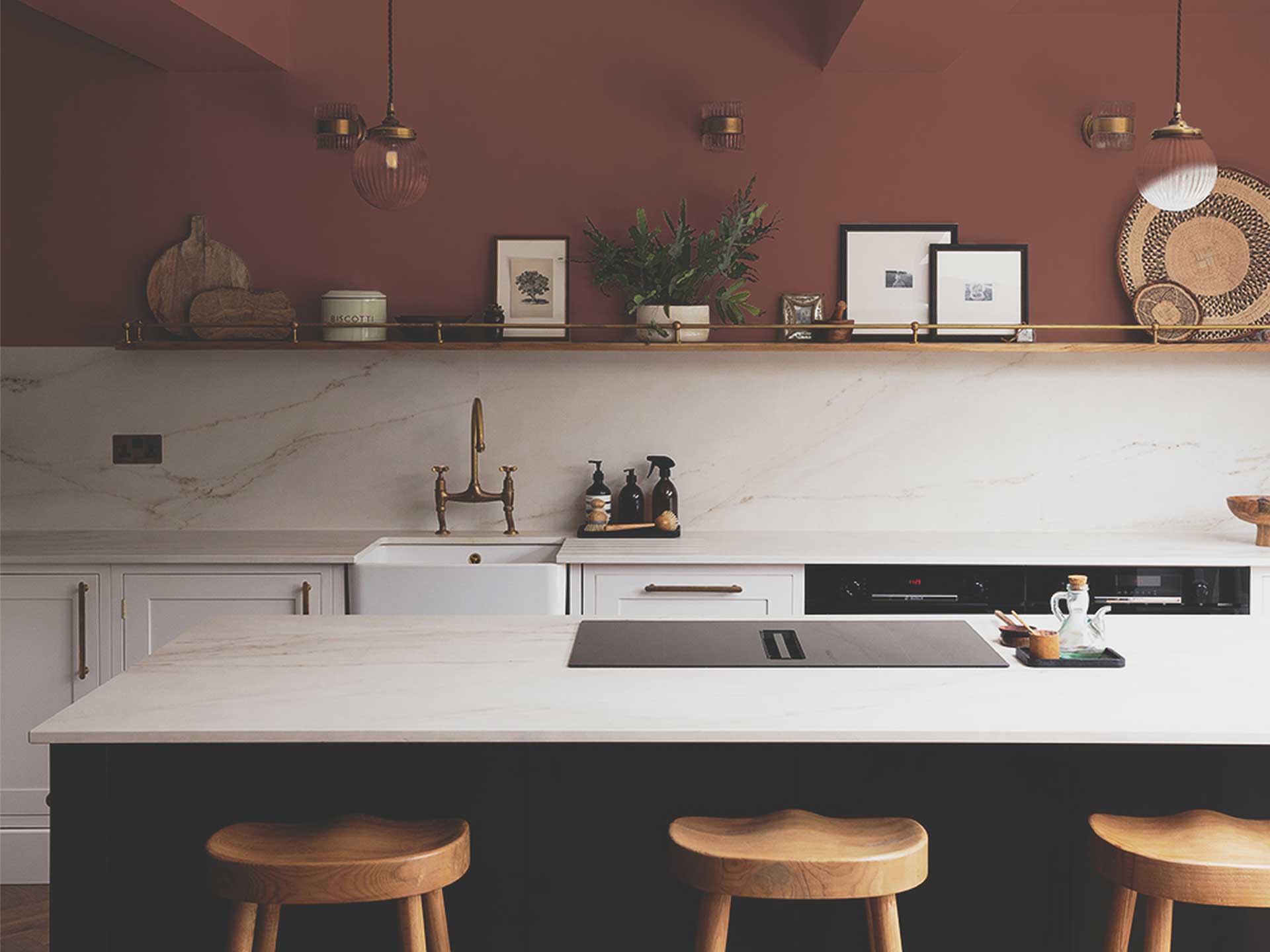
Overhaul your energy efficiency
Kitchens are energy heavy and there are plenty of areas to identify where you can save both energy and money to create a sustainable kitchen. Firstly, thinking about hobs and induction is your best bet. Less heat gets wasted with an induction hob as you’re only heating up the cookware and not the entire hob.
Secondly, your kettle. Boiling water taps will make a noticeable difference to your savings, especially if you’re a keen tea drinker. The Energy Saving Trust has estimated that £68 million pounds is wasted in the UK each year due to overfilled kettles.
Then there are your appliances. Every appliance is rated from A+++ to G for things like washing machines and A to D for dishwashers (this system was introduced by the EU in 1995, with the A category being the most efficient), so you can work out how much it’s costing you to run each appliance. Look out for the Energy Saving Trust recommended logo for the most efficient products when buying new appliances.
Don’t forget your lighting. Not only is it one of the most important factors in determining a relaxed mood in your kitchen, it’s also imperative when it comes to energy efficiency.
Novy has just launched a designer lighting collection of gesture-controlled LED lighting to give you touch-free access to your lighting. The innovative collection, designed by industrial designers Matthijs Jansen and Jorg de Bont, means you can adjust the intensity and beam of the light when cooking and then swipe to warmer lighting for eating. The lighting is all fully recyclable and can be bought as shelf, wall and pendant lighting.

Create a sustainable lifestyle
Once you’ve worked hard to create your sustainable kitchen, it’s then time to work on creating a sustainable lifestyle. Making small ecological changes that you can easily incorporate into your life are the place to start.
Waste Managed estimates that “the UK wastes approximately 9.52 million tonnes of food every year”, and that around “70% of food waste comes from households”. The top most wasted foods in the UK are: bread, potatoes, milk, bananas, salad and vegetables.
Seeing what you have and organising it is a key way to keep food waste to a minimum. Nordic manufacturers Orthex Group has created SmartStore (modular, clear stackable boxes) out of 20% bio-based plastic with airtight lids to keep food fresher for longer. They also have SmartStore Vision boxes for dry goods to neatly stack in your pantry.
Zwilling has designed a vacuum starter set, which includes microwave, freezer, dishwasher safe and heat resistant vacuum glass containers and a vacuum pump. It also has an app whereby you can track the food’s shelf life via a QR code.
